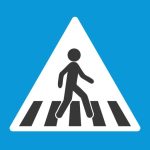Wearable Technology and Addiction Recovery

In a series of articles in September, AddictionNews examined the arguments in favor of addiction as a chronic brain disease and the arguments against it. The main arguments in favor can point to brain damage caused by repetitive, excessive use of substances such as nicotine, alcohol, caffeine, THC, cocaine, heroin, methamphetamine, fentanyl, and even ultra-processed foods.
The main argument against addiction as a chronic brain disease is that most people recover from it without treatment. They age out of it. They mature. They cut back. They step back from the edge. They take control over a disease that had taken over their lives and they put it in a cage, so to speak. Recovery is not only about abstinence but also about reducing the impact of addiction on your life to a manageable level.
To say that people recover without treatment is not quite correct. They recover without entering into formal treatment programs. Many smokers recover with the use of nicotine patches, gums, and prescriptions. Many alcoholics participate in treatment anonymously and go through treatment a couple of times before they are able to stop drinking completely. The same is true of addicts to illicit drugs; it may take a few times before it sinks in that they will need to stop using.
According to a 2019 survey conducted by the National Survey on Drug Use and Health, 11.1% of U.S. adults self-report having a substance use disorder at one time. Of those people, 74.8% report they have been in remission for at least a 12-month period. That means almost three-quarters of those who had substance use disorders no longer have them. Less than 10% of those with a substance use disorder receive treatment for their “chronic brain disease.”
A new study released in PLOS Biology points the way to measuring improvements in cognitive function and brain repair during recovery. The unique one-person study was performed by the researcher, Ana Maria Triana, on herself. Dr. Triana is in the computer science department at Aalto University in Finland. The research is summarized in a review at StudyFinds by editor-in-chief, Steve Fink:
[Triana] underwent 30 brain scans over 15 weeks… wearable devices tracked Triana’s sleep patterns, physical activity, heart rate, and breathing rate… By combining frequent brain scans with data from wearable devices and smartphones, the researchers were able to paint a detailed picture of how factors such as sleep quality, physical activity, mood, and even heart rate variability influence brain connectivity.
The data collected holds out the prospect of using wearable technology to detect such subtle moods as cravings that could trigger a cascading series of interventions to help patients in recovery. That intervention could be as simple as a text saying, “Do you need to take a break?” or as complex as a patch delivering medication upon remote activation.
While the Triana study was not looking at the use of wearable technology in addiction recovery, the results reveal some of the hidden pathways in which recovery takes place. In particular, the connection between heart rate variability and brain connectivity “suggests that practices that impact our body’s relaxation response, such as stress management techniques, could shape our brain’s wiring even when we’re not actively concentrating on a task.”
Key findings in the study were the long-range impacts of sleep cycles and physical activity on the brain’s functionality. A single event can cause a brain wave pattern that extends as long as 15 days, the study found. The author has high hopes for the technology:
Linking brain activity with physiological and environmental data could revolutionize personalized healthcare, opening doors for earlier interventions and better outcomes.
Dr. Triana’s study may be the start of a more personalized, technological solution to addiction recovery, where treatment is administered in real time based on conditions determined by wearable technology. The use of such devices would lead to a river of real-time data on the biological impacts of various drugs and practices. In theory, that should lead to exponential improvement in the targeting of therapies for the treatment of substance use disorders. We’ll keep you posted.
Written by Steve O’Keefe. First published November 5, 2024.
Sources:
“Longitudinal single-subject neuroimaging study reveals effects of daily environmental, physiological, and lifestyle factors on functional brain connectivity,” PLOS Biology, October 8, 2024.
“Brain’s ‘diary’ discovered: Why today’s stress matters two weeks from now,” StudyFinds, October 9, 2024.
“‘We do recover’: More evidence that tens of millions of adults in the United States have recovered from a substance use problem,” Recovery Research Institute, retrieved November 4, 2024.
Image Copyright: yagisu, used under Creative Commons license.




